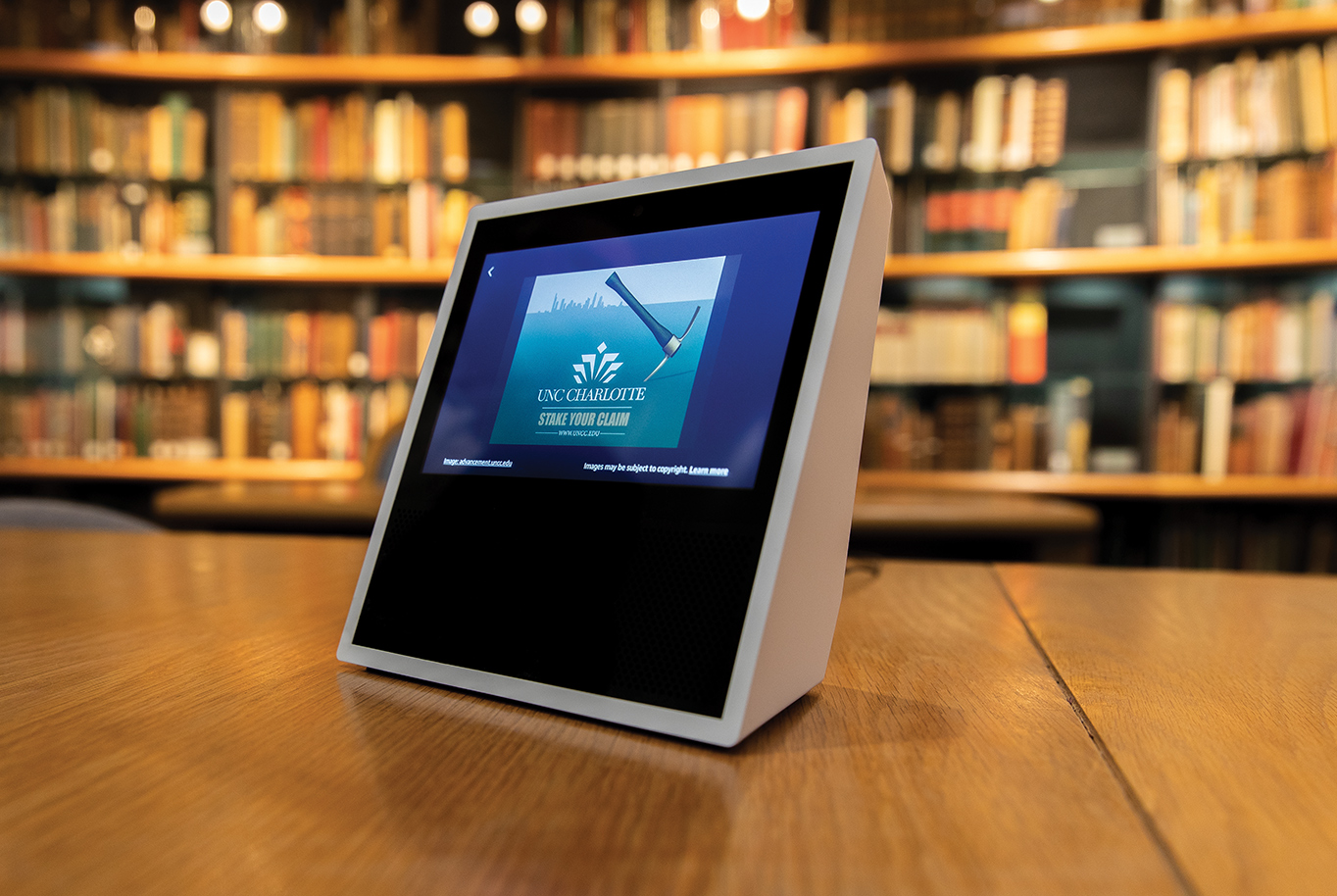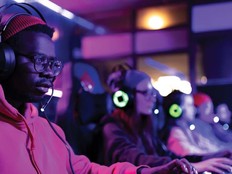MtF first captures a master image of each library area while empty. Then, as people move across a space, cameras detect changes in the pixels within each frame and compare them against the master image. Computer vision algorithms analyze the data to determine how many people were in a particular area and how long they stayed there.
To protect patrons’ privacy, MtF does not store photos or videos, Griffey notes. “What you get over time is a sense of how the space is being used, but without the capacity to identify individuals,” he says. “What we’re ultimately trying to measure is what people are paying attention to, to give libraries a tool to make their spaces better for patrons.”
A handful of institutions, including the University of Oklahoma, are beta-testing MtF. Last October, OU Libraries’ interim head of web services, Tim Smith, set up six MtF scouts in Bizzell Memorial Library. He wanted to measure foot traffic for an exhibit on the life and work of architect and former OU professor Bruce Goff.
“We were able to see what portions of the exhibit were getting traffic, which ones were being ignored and how long people were engaging,” Smith says. Among other things, OU learned that people spend more time looking at large blueprints than small text displays, and that they avoid walking into cubbyholes or alcoves — data that can inform future exhibits.
Robots and Artificial Intelligence Put a New Twist on Familiar Services
Institutions are also embracing robots and AI in a wide variety of ways, says May Chang, library CTO for the University of Cincinnati and chair of the International Federation of Library Associations and Institutions’ 2019 conference on robots in libraries.
Some libraries deploy robots to manage their physical collections. It requires a lot of people to retrieve and return books to shelves, Chang says. In high-density storage areas, libraries may use automated systems that can retrieve items faster and more accurately using barcodes or radio-frequency ID tags.
At the University of Chicago’s Joe and Rika Manseuto Library, patrons log in to the catalog to select books. Mechanized cranes in an underground facility navigate to the book and place it in a bin, which is delivered to the front desk. An employee scans the book, which generates an email alerting the patron that it’s ready for checkout. The process takes less than five minutes.
Telepresence robots are another innovation. Imagine, says Chang, a tablet PC on a stick attached to a robotic vacuum cleaner. With a two-way video connection, these can be controlled remotely, making it possible for patrons to speak with a staff member elsewhere in the facility or thousands of miles away.

An Amazon Echo Show helps visually impaired students use the library catalog at the University of North Carolina at Charlotte. Photography by: Peter Taylor.
In 2015, when Chang was associate dean of libraries IT at Western Michigan University, WMU’s Waldo Library piloted a telepresence robot program in collaboration with the University of Bologna in Italy.
“Most libraries aren’t comfortable with that because they want that human interaction,” she says. “But librarians can’t be everywhere at once, so a telepresence robot allows them to spread their reach and be in two places at the same time.”
The next evolution is humanoid robots, such as SoftBank Robotics’ NAO and Pepper, which can understand patrons’ questions and respond in kind, says Chang. These are being tested at the University of Luxembourg and public libraries in Roanoke County, Va., and Westport, Conn. Libraries are even considering drones to deliver books across campus, she adds.
Innovations Turn Libraries into Hubs Popular with Students
The most common form of library automation may be AI-powered chatbots that can search databases unavailable to the public, then return answers. Will robots eventually replace humans behind the reference desk? No, says Price. But automation is likely to change librarians’ jobs in ways not yet fully understood.
“There will always be one-on-one consultations for specialized needs, but 80 to 90 percent of consults send students to a small number of databases to find authoritative content,” he says. “That’s really easy to automate and make available 24/7, every day of the year.”










